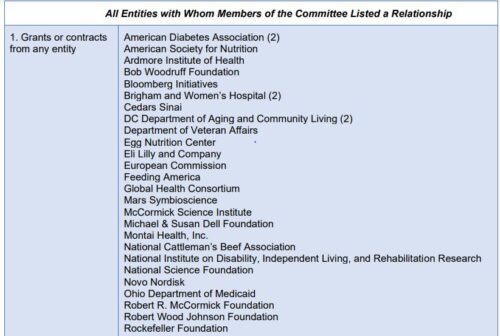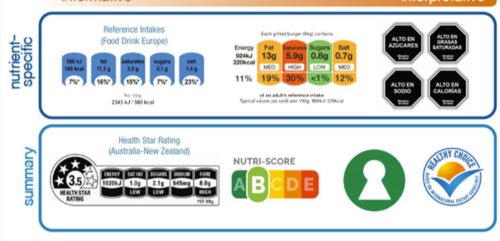Industry-funded study of the week: Quorn
[Note: If you saw this yesterday, ignore. I made a scheduling error so this post got sent out with yesterday’s. Apologies.]
A reader in Scotland, Prof. Lindsay Jaacks, who I was fortunate to meet in Edinburgh last April, tweeted (X’d?) this and tagged me on it::
A new study funded by @QuornFoods finds health benefits of substituting ‘Mycomeat’ for red & processed meat.
We need independent evidence far from the hands of industry if we are going to transform #FoodSystems.
I looked it up:
The study: Farsi, D.N., Gallegos, J.L., Finnigan, T.J.A. et al. The effects of substituting red and processed meat for mycoprotein on biomarkers of cardiovascular risk in healthy volunteers: an analysis of secondary endpoints from Mycomeat. Eur J Nutr 62, 3349–3359 (2023). https://doi.org/10.1007/s00394-023-03238-1.
- Purpose: “Mycoprotein is a relatively novel food source produced from the biomass of Fusarium venenatum. It has previously been shown to improve CVD risk markers in intervention trials when it is compared against total meat. It has not hitherto been assessed specifically for benefits relative to red and processed meat.”
- Methods: “We leveraged samples from Mycomeat, an investigator-blind randomised crossover controlled trial in metabolically healthy male adults (n = 20), randomised to consume 240 g/day of red and processed meat for 14 days followed by mycoprotein, or vice versa. Blood biochemical indices were a priori defined secondary endpoints.”
- Results: “Mycoprotein consumption led to a 6.74% reduction in total cholesterol (P = 0.02) and 12.3% reduction in LDL cholesterol (P = 0.02) from baseline values…There was a small but significant reduction in waist circumference for mycoprotein relative to meat (− 0.95 ± 0.42 cm, P = 0.04). Following the mycoprotein diet, mean systolic (− 2.41 ± 1.89 mmHg, P = 0.23) and diastolic blood pressure (− 0.80 ± 1.23 mmHg, P = 0.43) were reduced from baseline.” Urinary potassium was higher, but the study found no difference in triglycerides, urinary sodium, nitrite, or TMAO.
- Conclusions: “These results confirm potential cardiovascular benefits when displacing red and processed meat with mycoprotein in the diet. Longer trials in higher risk study populations are needed to fully elucidate suggested benefits for blood pressure and body composition.”
- Conflict of interest: “This work was part funded by Marlow foods Ltd. TJAF is a consultant to Marlow Foods.”
Comment
Marlow Foods is the parent company of Quorn, mycelium-based products. Quorn products have been around in the U.S. since 2002. The Center for Science in the Public Interest has been dubious about these products ever since, arguing that Quorn induces allergic reactions and gastrointestinal distress and should be labeled as such. It has also filed a class action lawsuit and engaged in other litigation. CSPI refers to Quorn as “fungus” or “mold.” Marlow, and other producers of mycelium-based meat substitutes prefer “mushroom.” Marlow is doing what it can to counter criticism of the safety of theae products.
If you want to try Quorn, be sure to check the ingredient list. Here’s what’s in QUORN VEGAN MEATLESS SPICY CHIQIN PATTIES:
Mycoprotein (54%), Wheat Flour (Wheat Flour, Calcium Carbonate, Iron, Niacin, Thiamine), Canola Oil, Water, Wheat Starch, Wheat Gluten, Pea Protein, Potato Protein, Calcium Chloride, Calcium Acetate, Salt, Chilli Flakes, Parsley, Yeast Extract, Onion Powder, Garlic Powder, Pea Fiber, Yeast, Tomato Powder, Spices (Cayenne Pepper, White Pepper), Carrageenan, Sodium Alginate, Rice Flour, Spice Extracts (Black Pepper Extract, Cayenne Extract, Ginger Extract), Paprika Extract (Coloring), Natural Flavor, Sage, Sugar, Leavening (Ammonium Carbonate)., Contains Wheat.
Ultra-processed? absolutely [industrially extracted ingredients; not much real food except wheat; you can’t reproduce this in your home kitchen].
Delicious? You decide.






